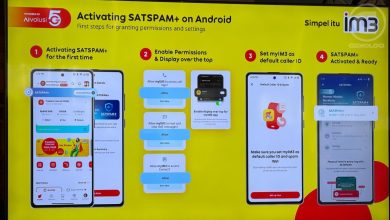Convenience vs. Security: Navigating the Digital Tightrope

by Kuna Nallappan, RVP of Marketing for Asia Pacific, F5 Inc
We live in a digital age where convenience reigns supreme. The simple acts of swiping, tapping, and clicking open up a world of infinite potential—allowing us to seamlessly access services, make lightning-fast payments and revel in personalized recommendations that align perfectly with our unique preferences. Our lives have become so intricately intertwined with technology and digital infrastructure to the point where sharing personal data has now become second nature. In fact, the latest findings from the F5’s Curve of Convenience report reveal a staggering increase in the willingness of Singaporeans to share their data in exchange for convenience during payments. According to the report, an astounding 73% of Singaporeans now express this willingness, marking a significant jump from 55% in 2020. The report also highlights that 63% of Singapore consumers are willing to share their data to enjoy a personalized experience.
Amidst this embrace of convenience, a sobering reality emerges—last year alone, an astonishing S$661 million was lost to scams. Surprisingly, it was the young adults aged 20 to 39 who bore the brunt, accounting for nearly 54% of all victims.
This revelation is a stark reminder that threat actors possess a cunning ability to deceive anyone, even the digitally savvy Gen Z and millennial populations, who inadvertently provide fertile ground for mischievous cyber tricksters to thrive and devise increasingly sophisticated methods that blur the lines of real and fake.
Irrespective of generation, our dependence on digital services is magnified by the active promotion of digital connectivity by organizations and governments in every facet of life, be it scheduling doctor appointments or filing taxes.
This was compounded by the Pandemic, which compelled organizations to either embrace digitalization or face collapse, fundamentally disrupting traditional business models everywhere. Businesses have also been continuously seeking opportunities to innovate their customer experience and expand their market share and continue to be under pressure to do so today.
Against this backdrop, how can organizations strike a harmonious balance between convenience and security to safeguard their customers’ trust, fortify their data security, and thrive in this ever-evolving dynamic digital landscape?
The Convenience Conundrum
Convenience has emerged as a prized commodity in this era of growing reliance on online services. This preference for convenience is readily apparent, with 84% of Singapore consumers opting for the use of third-party login features. Moreover, this inclination is especially pronounced among Gen Z and millennials, who, as digital natives, expect a seamless integration of the digital landscape into their lives. To that extent, the report highlights that 89% of Gen Z and 81% of millennials in Singapore use third-party sign-in features, such as using Facebook or Google accounts, to effortlessly access various apps without the hassle of creating new logins.
The increasing desire for ease and efficiency extends to the domain of digital payments as well. Whether it’s paying for groceries, securing coveted Taylor Swift tickets, or acquiring F1 passes, the report further unveils that a significant 59% of Singaporeans now favour digital payments as their primary choice. Notably, this preference cuts across generations, with Gen Z, millennials, and even boomers accounting for 82%, 83%, and 84% respectively.
While the use of third-party logins and digital payments has undoubtedly introduced greater speed and a seamless user experience, it has also exposed new attack vendors and potential vulnerabilities in organizations’ API (Application Programming Interface) technology and security models.
As such, the convenience conundrum or the convenience-privacy paradox lies in the organizations finding the right balance—harnessing the power of data to create flawless experiences while ensuring that customers’ privacy and security are protected. It requires organizations to walk a tightrope, delivering the convenience that customers crave while implementing robust safeguards to mitigate risks.
The Rising Threat Landscape
As API technology invariably becomes a key enabler for data sharing, empowering organizations to construct robust digital ecosystem modes, it inadvertently amplifies the scope for potential attacks, providing malicious entities with an expanded array of gateways to exploit.
Consequently, API technology is at a heightened risk due to its inherent nature of facilitating rapid data sharing. Furthermore, as even the smallest of features become interconnected with user experience, APIs are progressively transforming into vulnerable entry points for security breaches and data compromises.
In the past year alone, we witnessed two high-profile incidents of API security breaches. One of these incidents targeted Venmo, a widely used mobile payment service, resulting in the exposure of over 200 million transactions. The other breach focused on LinkedIn, exposing the available data of a staggering 92% of user profiles.
These breaches serve as a stark reminder of the critical importance of robust API security measures in safeguarding sensitive user information and solidifying organizations’ security.
The Imperative of Security
Given that APIs serve as the foundation of today’s digital experiences and play a pivotal role in the digital economy by enabling application modernization, the rise of API vulnerabilities has made it crucial for business leaders to place API security models at the forefront of their priorities.
Imagine having a house with a main entrance that is well-guarded, and everyone knows how to use it safely. But there’s also a secret backdoor that hardly anyone knows about, and it’s not being watched like the main entrance. A shadow API is akin to this said secret backdoor, hidden away and unguarded.
Shadow APIs could be a potential entry point for cyberattacks if left unchecked, leading to data breaches or system takeovers. This critical vulnerability has made business leaders recognize an urgent need to enhance API security models to safeguard sensitive information and maintain the integrity of their digital infrastructure.
Prioritizing API security is not only crucial for mitigating the financial burden, regulatory fines, and the increased scrutiny that accompany cyberattacks and data breaches but also for fostering trust and cultivating positive brand associations among consumers.
In fact, as per the report, a compelling 56% of Singapore consumers place their trust in companies with a strong brand image, while an alarming 53% of consumers would consider abandoning a brand in the event of a data leak. These numbers underscore the significance of robust API security measures in maintaining a loyal customer following and protecting brand reputation.
To that extent, there is a need for organizations to secure their APIs throughout the digital portfolio, effectively and consistently across various clouds, architectures, and development frameworks. In addition, organizations must incorporate a positive API security model that enhances risk management and enables continual discovery and protection of APIs.
With a proactive mindset in recognizing the inherent risks and challenges posed by the growing demand for seamless experiences, organizations can create a digital ecosystem that thrives on convenience without compromising on security.




